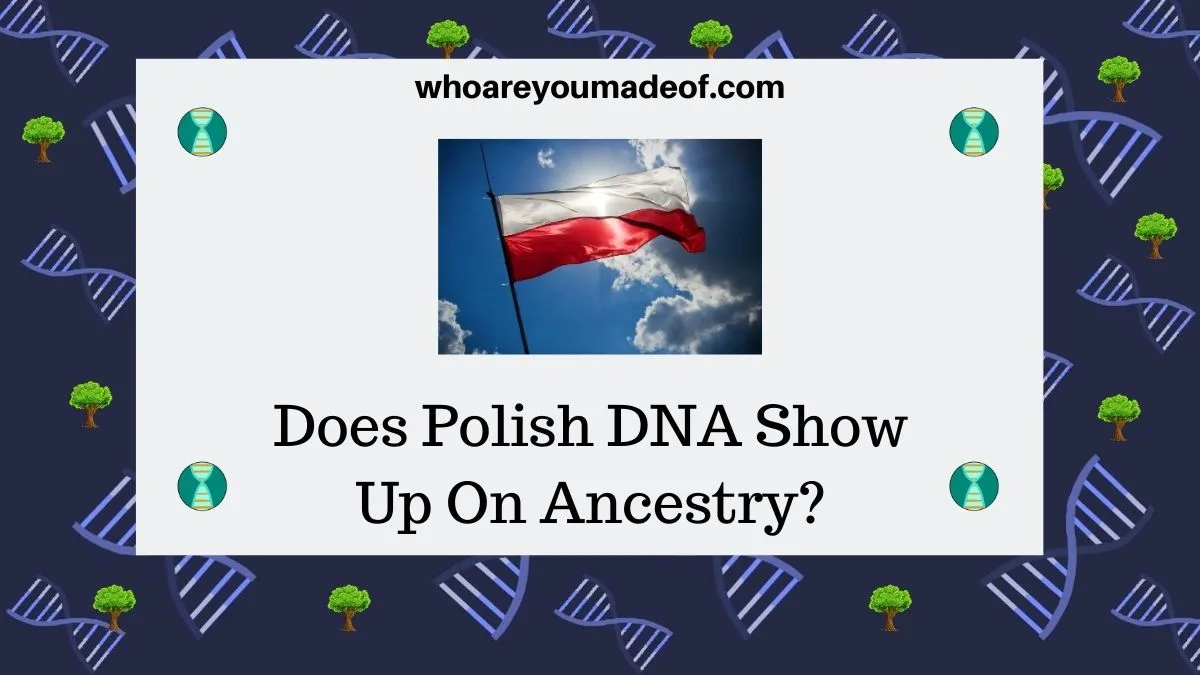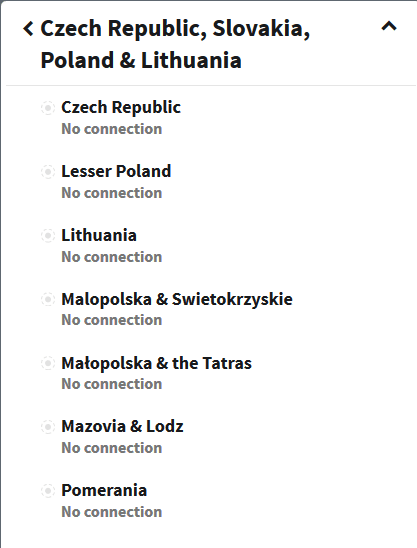Did you get your Ancestry DNA results back expecting to see Polish as your ethnicity? Surprise! In this article, you will learn why your Polish DNA might not show up on Ancestry's DNA ethnicity estimate.
This post was originally published in October, 2017, but was updated in August, 2018 to reflect the most current information about how Polish DNA shows up on Ancestry DNA.

How does Polish show up on Ancestry?
If you have Polish ancestry, your Polish DNA will show up as Eastern European. There is also a chance that you will have a sub-region of Eastern Europe on your DNA results.
If your DNA results only say "Eastern Europe", it doesn't mean that you aren't Polish, or that you are. Only tracing your family tree, using a paper trail or your DNA matches, can tell you for sure.
Testing your DNA and showing Eastern European, however, is a good first start.
If your Polish ancestors are very recent, such as a parent or a grandparent, there is a possibility that Ancestry's software will be able to identify which parts of Poland your ancestors might have lived in.
The images below show the currently available Eastern European sub-regions that include parts of Poland. You will notice that the Polish regions overlap with other countries, such as Slovakia and Lithuania.


Why doesn't my ethnicity estimate show a Polish sub-region?
Some people are "lucky" and inherited DNA that is easily identifiable as matching a particular region of Poland. For the rest of us - even those of us with substantial Polish roots - this explanation applies:
Ancestry DNA uses a database full of DNA samples from people who are native to regions all over the world. The current size of the Eastern European database is 646 people who are native (and can show a long family history in their region) to that geographic region.
If you have several distant Polish ancestors, there is a good chance that Ancestry's software is able to identify your Polish DNA as Eastern European, but isn't able to isolate it enough to say for certain that it matches a region of Eastern Europe.
For example, my mother's grandfather was born to two Polish-born parents, meaning that my mother has two 100% Polish great-grandparents.
She also has two Slovak great-grandparents, which might explain why she was assigned a sub-region of Eastern Europe (the Czech Republic, Slovakia, Poland and Lithuania sub-region).
Most of my Eastern European ancestry comes from my mom, but some came from my dad, and naturally, all of the ancestors are more distant (from me). My Eastern European DNA is more admixed, and it's harder for the software to say for sure which part of Eastern Europe my ancestors were from.
There is a huge demand for genetic DNA tests that are even more accurate and sensitive to more detailed geographic regions. I believe that as this technology progresses, we might see them begin to divide the Eastern European region into more specific ethnicities.
One great thing about having tested with Ancestry DNA is that as they improve their results, your individual test results will be automatically updated with the more current information.
Is there such a thing as a Polish ethnicity?
Yes. Around a thousand years ago, a tribe called the "Polans" was able to bring together tribes from the surrounding areas (basically, what is now Poland).
These people began to identify as Polish, and shared a language and culture. The descendants of these peoples are what are now known as ethnic Poles.
If you have ancestors born in Poland, or if you were born in Poland, you are likely descended from this group.
Do you want to see how your Polish DNA show up on Ancestry DNA?
If you haven't yet taken a DNA test with Ancestry and are wondering how your Polish roots will show up on your results, why not take a test today? You'll learn so much about your family's history!
How do I learn more about my Polish ancestry?
If you want to learn more about where your family came from, these are the steps that you should take:
- Talk to your family to learn as much as possible (try using my Family Interview Worksheet to know which questions to ask)
- With the information you gather (and what you already know), start building a family tree. I like using Ancestry for this purpose.
Once you've begun building your family tree and you've spoken with your older relatives:
- Consider learning about and using Gedmatch in order to get as much information from your DNA as possible. (What is Gedmatch?)
- To find Polish DNA matches that have tested with other websites, upload to other sites like Family Tree DNA and MyHeritage DNA. These family members might be able to help you learn about your Polish family history.
Conclusion
For the time being, we just have to take comfort in the fact that our Polish ancestry shows up in our DNA as Eastern European. Maybe someday we will be able to know more details about DNA and our ethnic heritage.
With the knowledge obtained from our DNA tests in hand, the best way to learn about our Polish ancestry is through good, old-fashioned genealogy.
Did you find Eastern European in your DNA? Do you know where it came from? I would love to hear your story!
Thanks for stopping by.
Featured Image Credit: Alexander Cahlenstein, CC BY 2.0 License


Markc21
Tuesday 5th of December 2017
Genetic mixture/salsa What is today east Germany, (between the Oder and the Elbe-Saale line) ethically (Just 1100 years ago), was a home to western Slavs. https://upload.wikimedia.org/wikipedia/commons/6/6e/Slavic_tribes_in_the_7th_to_9th_century.jpg What is today Italy? It's a Genetic pot, mixture of Romans with occupiers and slaves -Greeks,Spaniards, French, Slavs, Saxons, North Africans and more. Spain- occupied by North African Arabs for centuries. South east Europe - occupied by Ottoman Empire for over 5 centuries Today Turks genetic mix with Greeks, Romans, Slavs and Near Middle Esters Ireland strong genetic influence from Spain Today's DNA tests are money generating scam. Still, a primitive DNA test- can't detect your Eastern Slav area of more than 400milion people??? But will detect ancestor of 4 million Scots or Irish. Save your money for later.
B.
Monday 21st of March 2022
@Markc21, They do not have 400 million samples from Eastern European people with a long family history in the area. Only hundreds. There is truth in DNA tests, but it is an estimate based off current information. My DNA tests accurately provided the countries that my families are from.